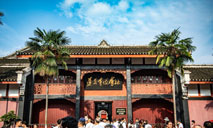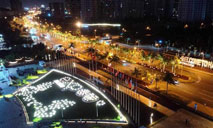Dream chaser: dancers and musicians redefining what it means to be disabled
As the bright birds' chirping breaks the silence, a light is cast onto the center of the stage, illuminating the silhouette of a dancer. At closer appearance, she is wearing a gossamer dress and adorned with peacock-like feathers pinned into her hair. In tune with the ethereal music, she kneels, spins, and waves her arms about into the air. At the show's final climax, she leaps into the air as if possessed by the spirit of a peacock.
While the audience is fully immersed with her graceful dance performance on stage, called "The soul of a peacock," there is an unseen teacher present below the stage conducting different gestures in keeping with the music. For the dancer, Wei Jingyang, the teacher serves as an interpreter for visualizing the music. Wei is a leading dancer for the China Disabled People's Performing Arts Troupe (CDPPAT), having lost her hearing when she was only one year old. However, her splendid performance makes it easy for her audiences to forget that this extraordinary young performer has never heard a note while on stage.
A door closed, a window opened
When Wei was a child, she was passionate about dancing, but the reality she faced had dampened her passion. "How can you dance if you can’t hear the music," her mother's words haunted her young mind. It was at that time, she realized that dancing was closely linked to music, which she would never be able to hear. However, the play of "The Thousand-hand Bodhisattva," a dance performed by deaf-mute artists from CDPPAT, eventually would come to rekindle her hope.
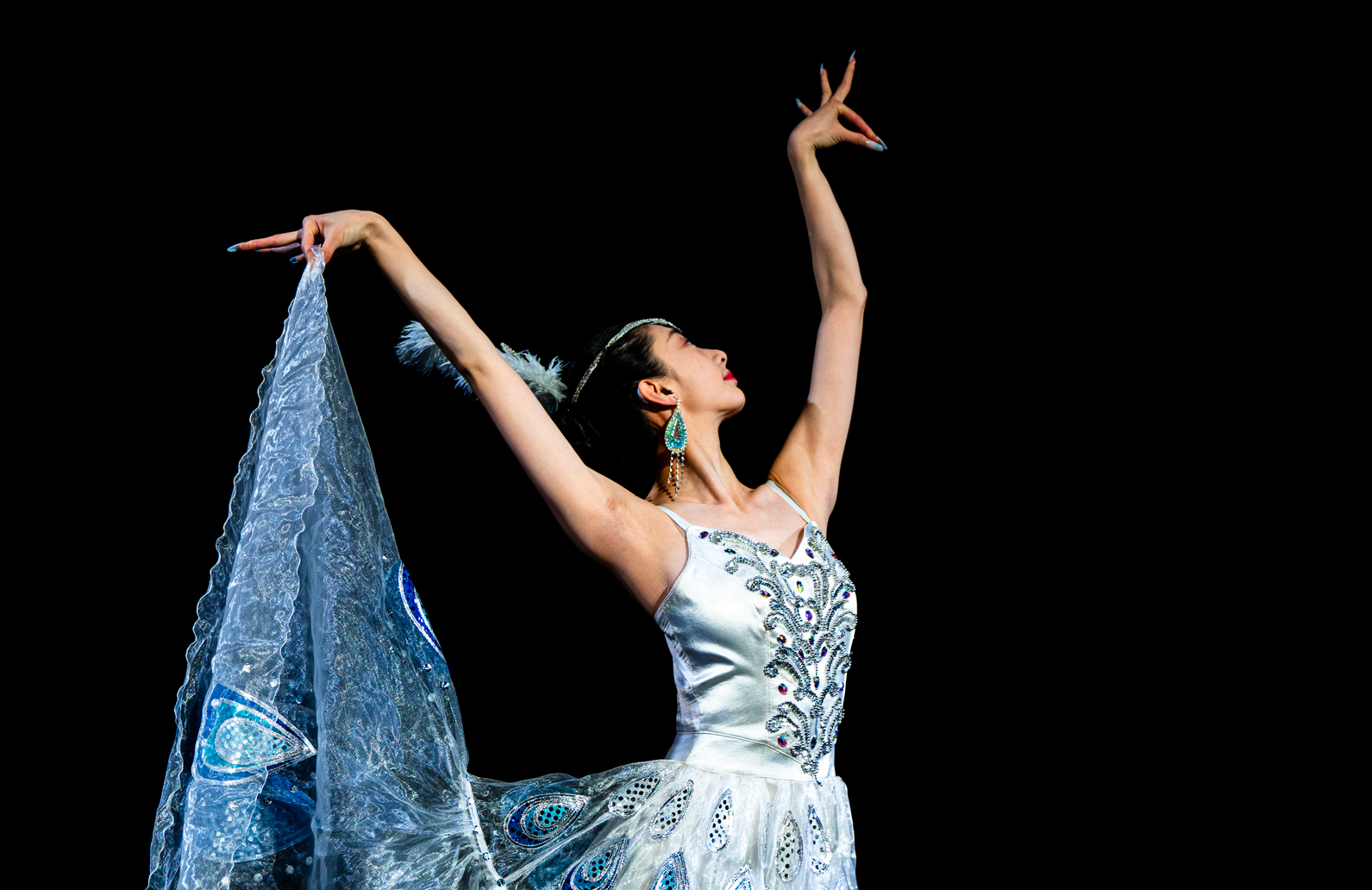
Wei Jingyang, a deaf dancer from the China Disabled People’s Performing Arts Troupe, performs "The Soul of a Peacock" on April 15, 2021 (People's Daily Online/He Zhuoyan)
"They cannot hear the music as well, but they can still dance. Why I can't? " she asked her mother excitedly after watching the show on TV. On her ten-year-old birthday, she asked for the gift of learning to dance, and when she was 12, she accepted an invitation to join CDPPAT, receiving systematic training with other members.
Dancing seems like an impossible activity for the deaf since one cannot rely simply on the music itself to synchronize physical movements. However, their teacher developed a method that could help deaf performers stay on beat with the music.
"Members have to touch the sound equipment or floors over and over again to feel the beats from the vibrations," said Hei Hong, a sign teacher at CDPPAT. "They have to internalize the beats and memorize the sign teachers' gestures that convey the tempo, rhythm, and phasing of the music, a process which would usually take them almost two months to master per dance, four times longer than normal dancers."
Despite their physiological defects, these young dancers have never stopped chasing their dreams. Instead, they have worked even harder. In order to present a well-executed show, dancers could squeeze whatever spare time they had to practice movements repeatedly without rest, according to Hei. "Apart from times for sleeping and eating, the dancers will otherwise plunge themselves into their practice in the training room," said Hei. "I was always impressed by their perseverance whenever I saw them drenched in sweat."
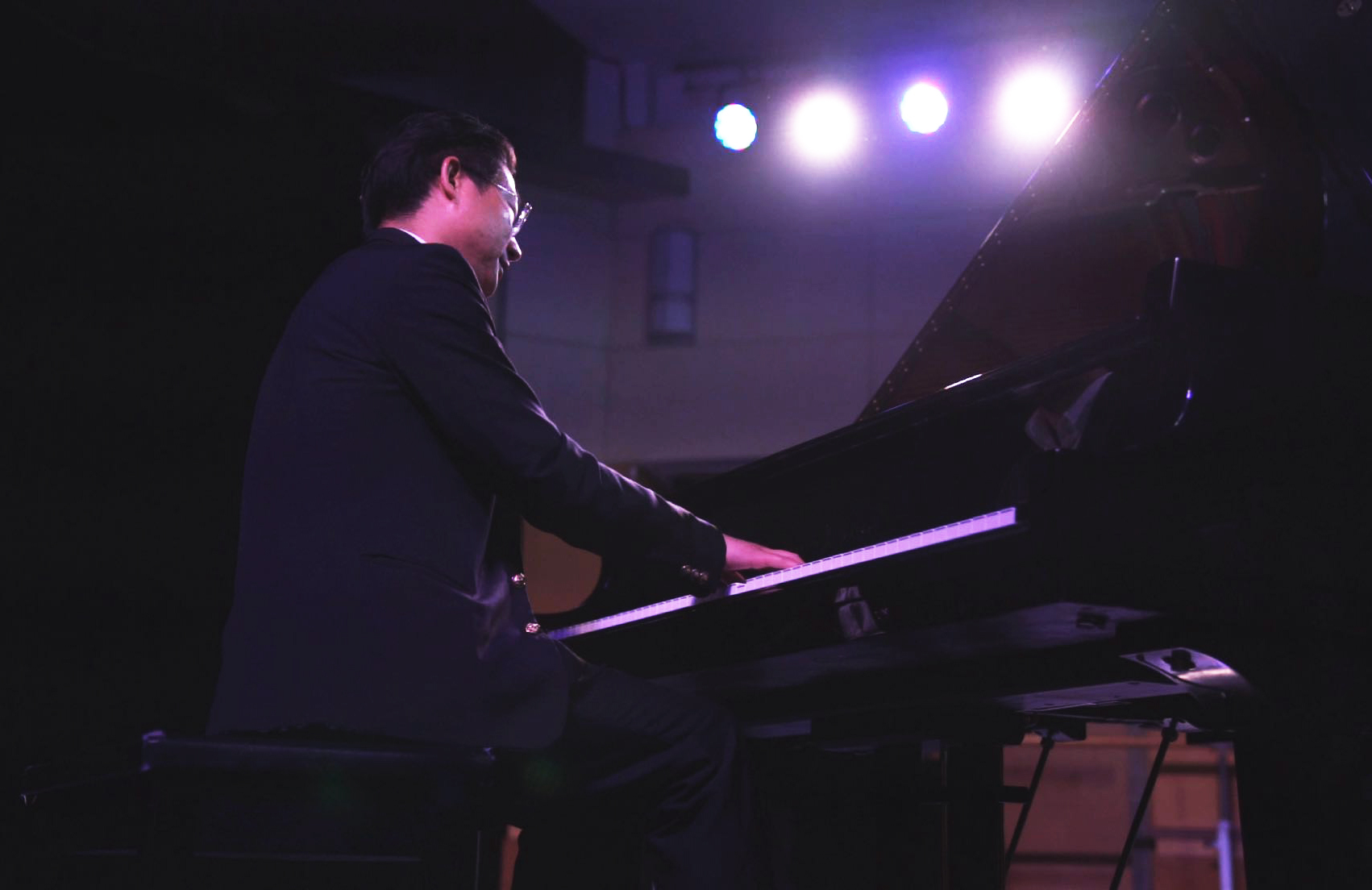
Jiang Can, a musician with visual impairment from the China Disabled People's Performing Arts Troupe, performs a song on April 15, 2021 (People's Daily Online/He Zhuoyan)
The troupe also includes blind musicians and singers. Like the deaf dancers, they don't dwell on their individual disabilities but focus instead on developing and perfecting their varied talents.
"Blind people are beset with great difficulties in learning music as we cannot see the script," said Jiang Can, a musician with visual impairment from CDPPAT. But they are nonetheless blessed with perhaps the most valuable treasure – that of hearing. "Hearing is our way to learn music," Jiang said.
When a door closes, a window is opened. The deaf dancers are endowed with highly sensitive eye-sight, and the blind musicians with excellent hearing, enabling them to enjoy the arts in their own way. "They are immersed in the performance and use their bodies and hearts to feel the music and dance," said Hei. "As they are more emotionally engaged than others, they can always interpret the deep emotion of the artwork."
Art as a power to heal and educate
While certain disabilities have isolated people from society, art provides them with a channel to engage with the outside world. "Dancing has been integrated into my life, which brightens my world with different feelings. I can feel pains and sorrow through dancing. It's my second life," said Wei
Jiang concurs with Wei's view. "Music is my best partner in life and the greatest force that has kept me chasing my dreams," said Jiang. "Music has brought laughter and joy into my life, which not only purifies my heart but also makes me feel hopeful and confident about my life."
Hei likes to compare the disabled to a sapling and art to nutrients. The nutrients can nourish the young tree, and art can likewise enrich the disabled. "Art enables them to find beauty in themselves and the world," said Hei. "Dance and music can build their confidence and help to form a positive attitude."
"When young members joined our troupe, they are at first timid and afraid to communicate with others," said Tai Lihua, famed dancer and president of CDPPAT. "I am gratified to see their shining smiles after years of training."
One of the troupe's missions is to reshape the image of the disabled group, which is often marginalized by the public, instead imparting the idea of social equality and participation. "Society always takes pity on the disabled, considering us as different and useless. Our performance aims to convey the spirit of the disabled," said Tai.
"It's important for society to create more opportunities for the handicapped to better integrate into social life, allowing them to participate as normal people do equally," said Tai.
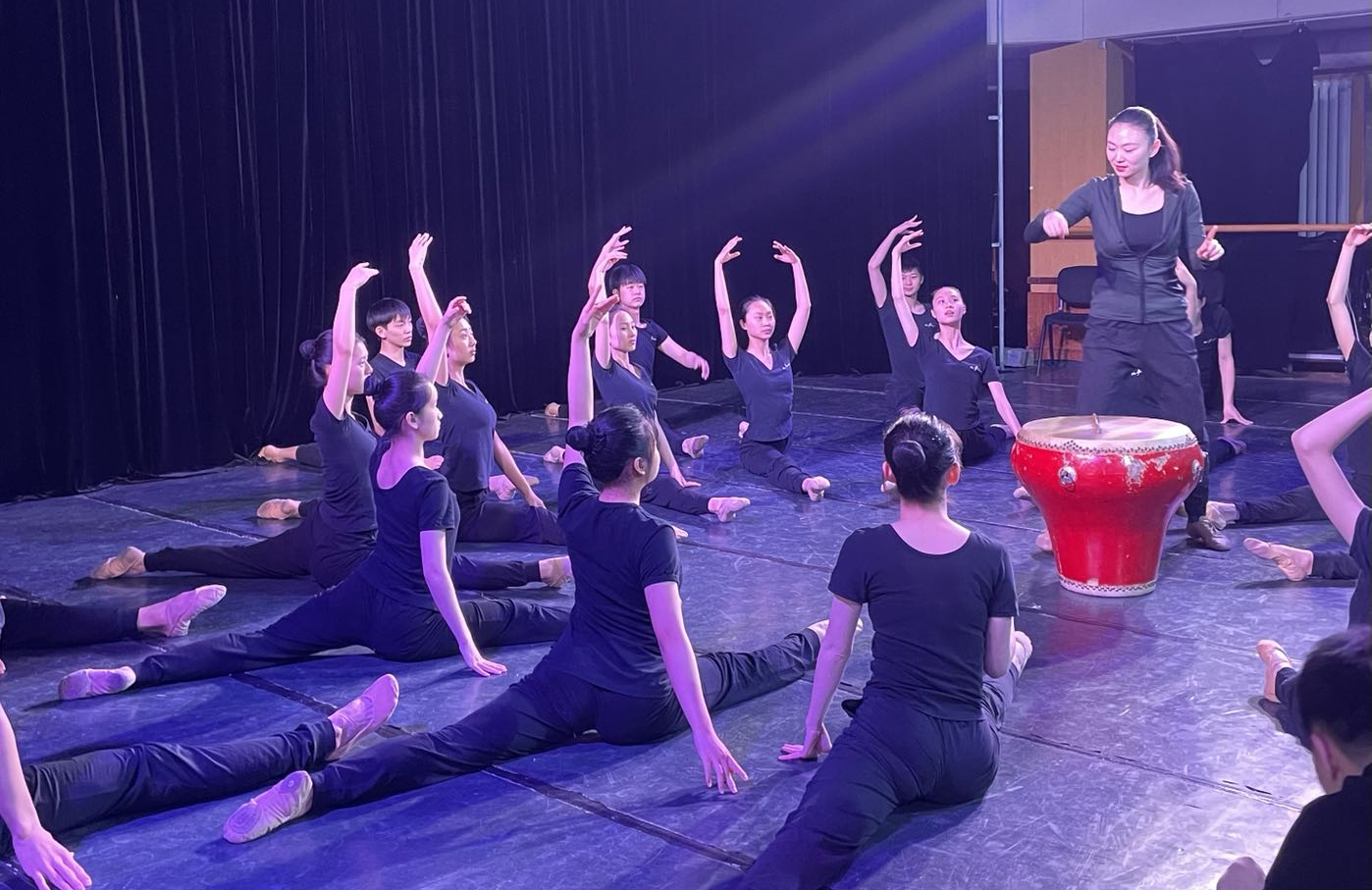
Photo taken on April 15, 2021, shows Hei Hong, a teacher from the China Disabled People’s Performing Arts Troupe instructing her students to feel the beats through vibrations. (People’s Daily Online/ Wu Chaolan)
By now, the troupe has toured around 103 countries and regions, delivering their precision-perfect performance and unique expression of art. The troupe has also experimented with new media, putting their performances online. "We want more people to appreciate our special art and know more about the group and individual members’ disabilities," said Tai.
The performances of CDPPAT has inspired millions of people, especially those who share in the same experiences. Their performances stand as vibrant proof that the disabled can also participate in society just like ordinary people.
The captivating performances of dance, music, songs, and more are not just for the sake of entertainment. Still, they serve as an inspirational reminder to other people with disabilities who can also chase their dreams and enjoy their life as long as they have an unswerving will to pursue them.
"Some things are given, some things are withheld, circumstances over which sometimes we have no choice. But one can always choose one's outlook on life, and look more on the positive side, facing life's disappointments with a cheerful and grateful heart," said Tai.
Photos
Related Stories
- Trailer: welcome to their distinctive yet beautiful world
- Bronze tree sculpture excavated from Sanxingdui Ruins basically restored
- Xi Focus-Quotable Quotes: Xi Jinping on archeological research
- Cultural strengths
- One pandemic, two cultures
- China publishes photocopies of Dunhuang's ancient Tibetan literature
- Festival of Thai Pongal held in Colombo, Sri Lanka
people.cn © People's Daily Online
Copyright © 2021 People's Daily Online. All Rights Reserved.








